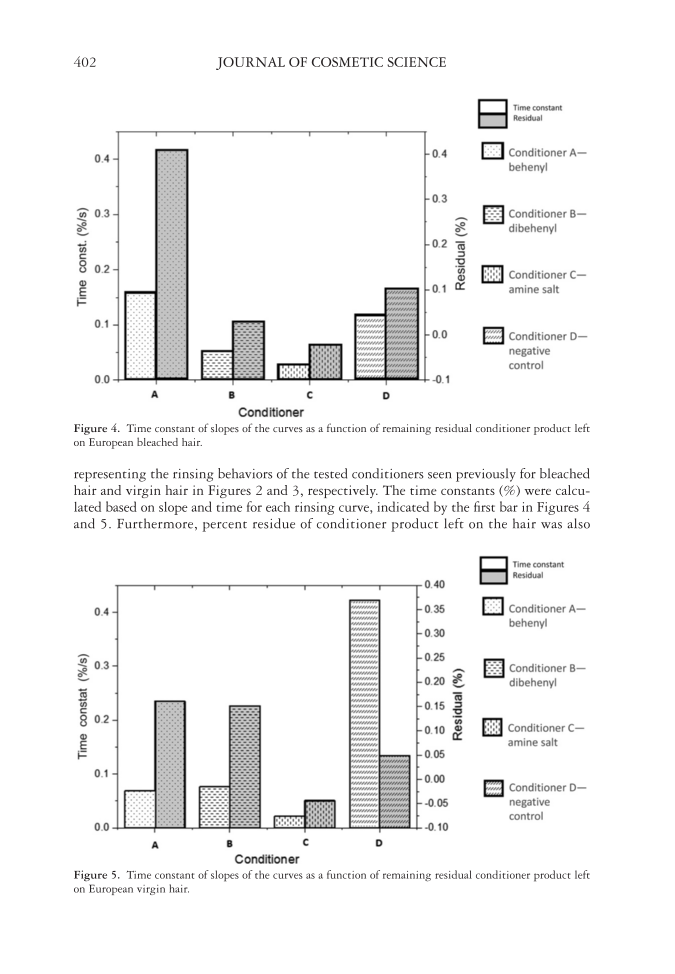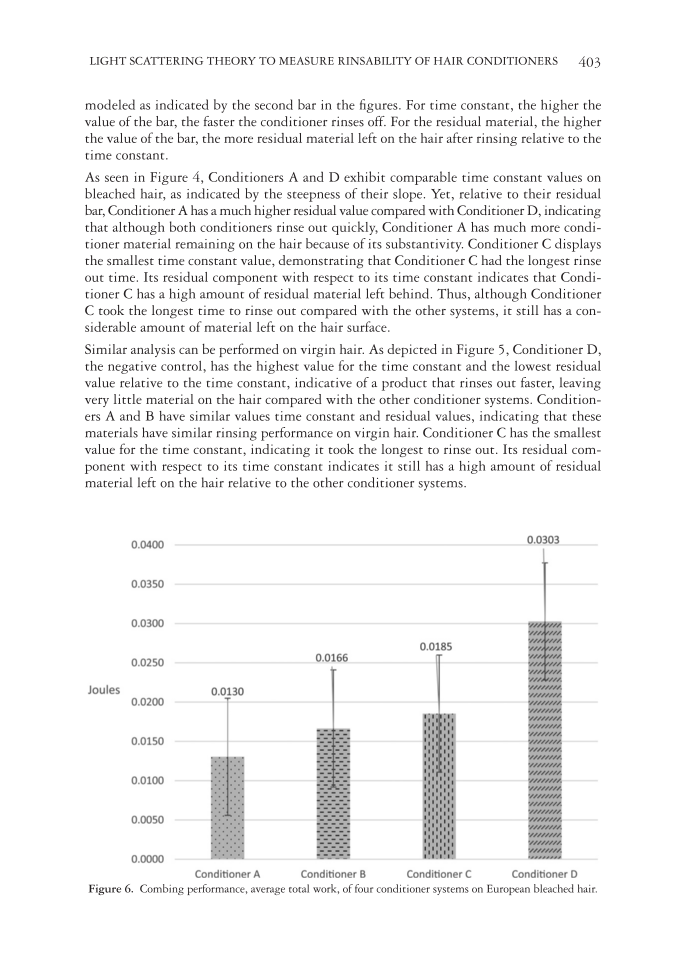JOURNAL OF COSMETIC SCIENCE 402 representing the rinsing behaviors of the tested conditioners seen previously for bleached hair and virgin hair in Figures 2 and 3, respectively. The time constants (%) were calcu- lated based on slope and time for each rinsing curve, indicated by the fi rst bar in Figures 4 and 5. Furthermore, percent residue of conditioner product left on the hair was also Figure 4 . Time constant of slopes of the curves as a function of remaining residual conditioner product left on European bleached hair. Figure 5. Time constant of slopes of the curves as a function of remaining residual conditioner product left on European virgin hair.
LIGHT SCATTERING THEORY TO MEASURE RINSABILITY OF HAIR CONDITIONERS 403 modeled as indicated by the second bar in the fi gures. For time constant, the higher the value of the bar, the faster the conditioner rinses off. For the residual material, the higher the value of the bar, the more residual material left on the hair after rinsing relative to the time constant. As seen in Figure 4, Conditioners A and D exhibit comparable time constant values on bleached hair, as indicated by the steepness of their slope. Yet, relative to their residual bar, Conditioner A has a much higher residual value compared with Conditioner D, indicating that although both conditioners rinse out quickly, Conditioner A has much more condi- tioner material remaining on the hair because of its substantivity. Conditioner C displays the smallest time constant value, demonstrating that Conditioner C had the longest rinse out time. Its residual component with respect to its time constant indicates that Condi- tioner C has a high amount of residual material left behind. Thus, although Conditioner C took the longest time to rinse out compared with the other systems, it still has a con- siderable amount of material left on the hair surface. Similar analysis can be performed on virgin hair. As depicted in Figure 5, Conditioner D, the negative control, has the highest value for the time constant and the lowest residual value relative to the time constant, indicative of a product that rinses out faster, leaving very little material on the hair compared with the other conditioner systems. Condition- ers A and B have similar values time constant and residual values, indicating that these materials have similar rinsing performance on virgin hair. Conditioner C has the smallest value for the time constant, indicating it took the longest to rinse out. Its residual com- ponent with respect to its time constant indicates it still has a high amount of residual material left on the hair relative to the other conditioner systems. Figure 6. Combing performance, average total work, of four conditioner systems on European bleached hair.
Purchased for the exclusive use of nofirst nolast (unknown) From: SCC Media Library & Resource Center (library.scconline.org)









































































































